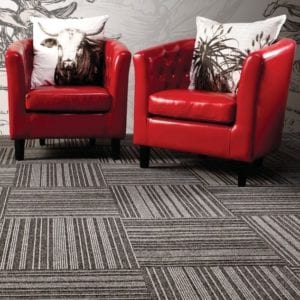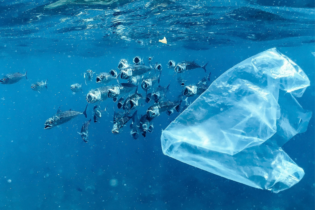A forward-thinking approach had already paid dividends for KwaZulu-Natal carpeting group Van Dyck Carpets, but PFE International director Dr Mehran Zarrebini believes shifting tactic to incorporate the world-renowned blue ocean strategy would escalate their success.
Family-owned holding company PFE International acquired Van Dyck Carpets from Belgian company Domo Carpets in 2004. Subsequently the group has invested significantly into equipment, new product ranges and sustainable manufacturing in South Africa. Carpets from tyres South Africa’s oldest carpet manufacturer, Van Dyck Carpets offers a combination of tufted, needle punch and woven carpets as well as manufacturing a range of acoustic underlays made from recycled rubber crumb from used truck tyres. Recently Zarrebini attended INSEAD Business School in Fontainebleau, France, to research the blue ocean strategy at the world renowned Blue Ocean Strategy Institute having initially encountered the concept while at Stellenbosch University. “Although it was only a small area within strategic management at Stellenbosch University, I was fascinated by it. I had the opportunity to work on some blue ocean projects as an individual and in syndicate groups while completing my MBA,” he said. What is the ‘blue ocean strategy’? More than a decade ago two INSEAD University professors broke ground by introducing “blue ocean strategy” as a model for discovering uncontested markets ripe for growth. Today Cirque du Soleil remains a key example of that approach. More than 30 years since its founding, Cirque du Soleil is one of the largest Canadian circuses and as profitable as entities that had existed for more than a century. In the Harvard Business Review March 2007 W. Chan Kim and Renée Mauborgne use the blue and red ocean concept as a metaphor to describe that success. The authors argue the universe consists of two oceans – blue and red – with the red representing existing competitive industries and the blue being uncontested market spaces untouched by competition. Industry boundaries in the red ocean are clearly defined and competition dictates the rules. Companies fight for customers and the more companies entering the red ocean, the fewer opportunities exist for enhancing profitability. Unique products are benchmarked and the red ocean waters become increasingly bloody. Blue oceans are born either when companies create new industries – eBay invented a business model for online auctions – or when companies start changing red oceans from within. Demand in blue oceans is created from zero.In the Cirque du Soleil case the owners destroyed the boundaries between circus and theatre to create something new from within a red ocean. Kim and Mauborgne argued all successful companies have used the blue ocean strategy, which has little in common with traditional methods of competition in the red ocean, as the platform from which to lead future profitable growth.
Changing perspective “One of the biggest attributes of the blue ocean concept is it challenges conventional wisdom of how businesses compete strategically. The key will be executing those principles into the business as strategy demands going beyond the existing industry boundaries,” Zarrebini said. He said companies traditionally focused on direct competitors, but the challenge was focusing on different industries and gaining a perspective outside that comfort zone. It also demanded seeking out non-customers rather than existing ones – to establish the essence of who the customer base should be. “When considering markets, great emphasis is placed on market segmentation to identify and capture new markets. Blue ocean strategy in contrast focuses on de-segmenting markets by looking at other industries and across industry boundaries to identify what could help generate broader demand,” he said. Furthermore, in a competitive industry, businesses commonly choose differentiation as a means to stand out from their competitors by providing premium value. The reality was market differentiation attracted costs and ultimately higher prices to customers. Zarrebini said the strategy taught to pursue differentiation and low-cost simultaneously in order to move away from being a premium competitor in an existing industry and create a new market space. Recycling for ‘blue oceans’ Two years ago Van Dyck Carpets embarked on a specific strategy that was now paying dividends, but Zarrebini said he intended to take the change process forward via the blue ocean approach. One example was the recently introduced recycled rubber tiles manufactured from recycled truck tyres. The raw materials were sourced within the PFE International Group and the finished product a softer alternative to concrete pavers and thus easier to walk on and more suitable for different applications including children’s playgrounds, impact prone areas and residential estates. “We may have stumbled on a blue ocean without even realising the situation and can look to launch the new product early in 2016,” he said. In the year ahead Zarrebini said Van Dyck Carpets would work towards creating blue oceans within the organisation to stimulate new insights. This would involve fieldwork, surveys and direct communication with customers and non-customers to establish market demands and develop market creating moves. Zarrebini said incorporating the blue ocean strategy meant empowering individuals within the organisation rather than dictating via the traditional hierarchical management structure. “It is critical for innovation to become a key attribute of day-to-day business. It is not a once-off thing,” he concluded.







